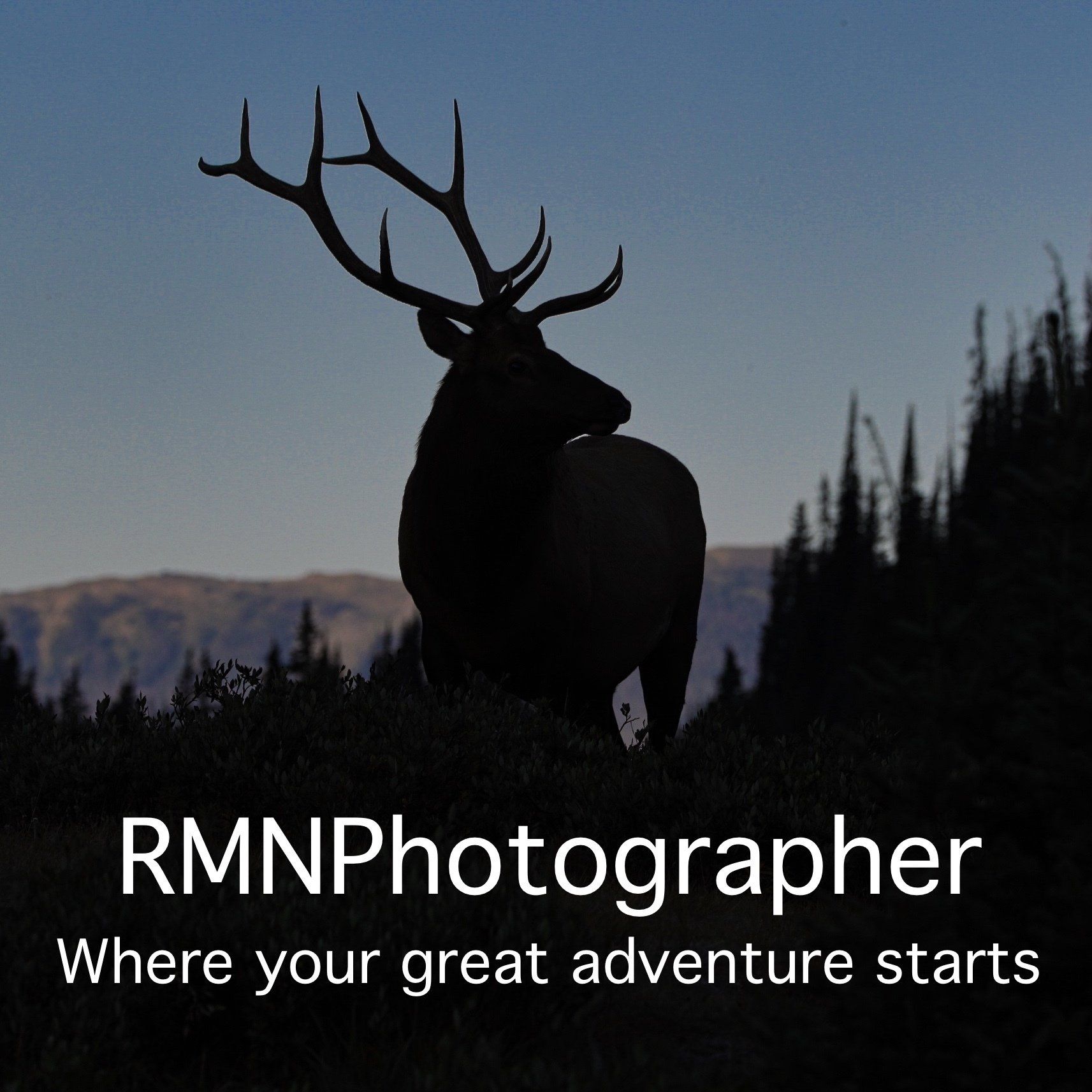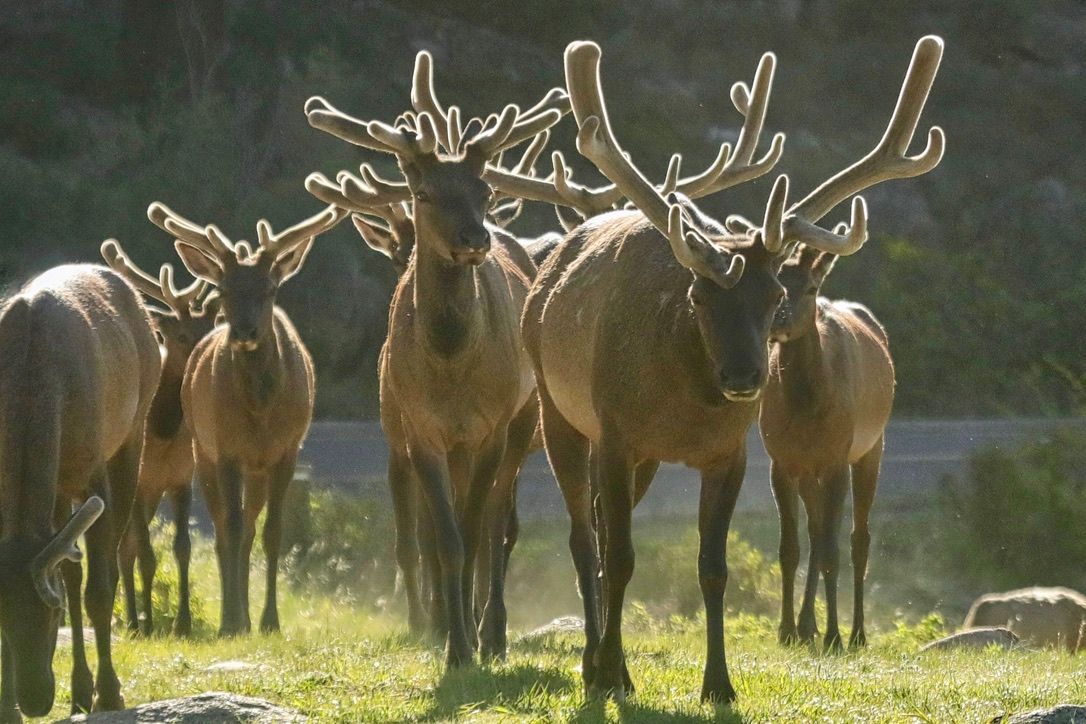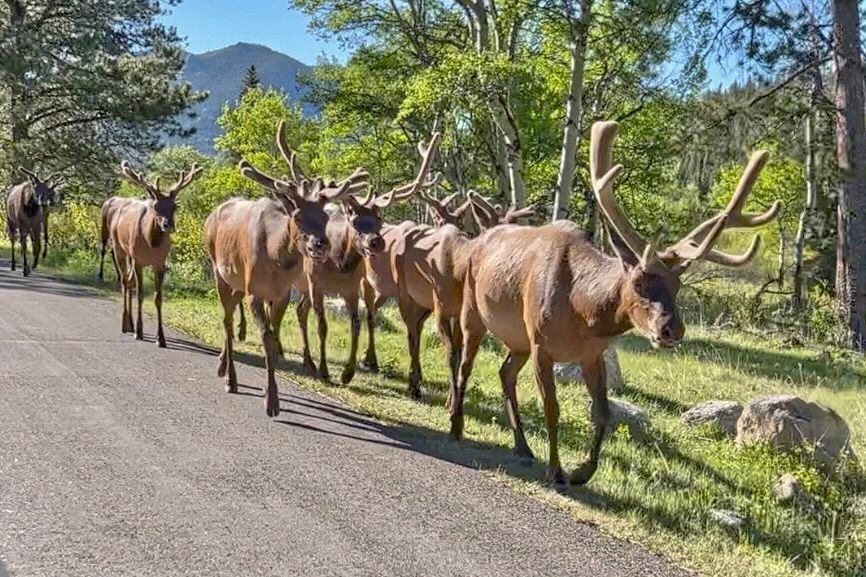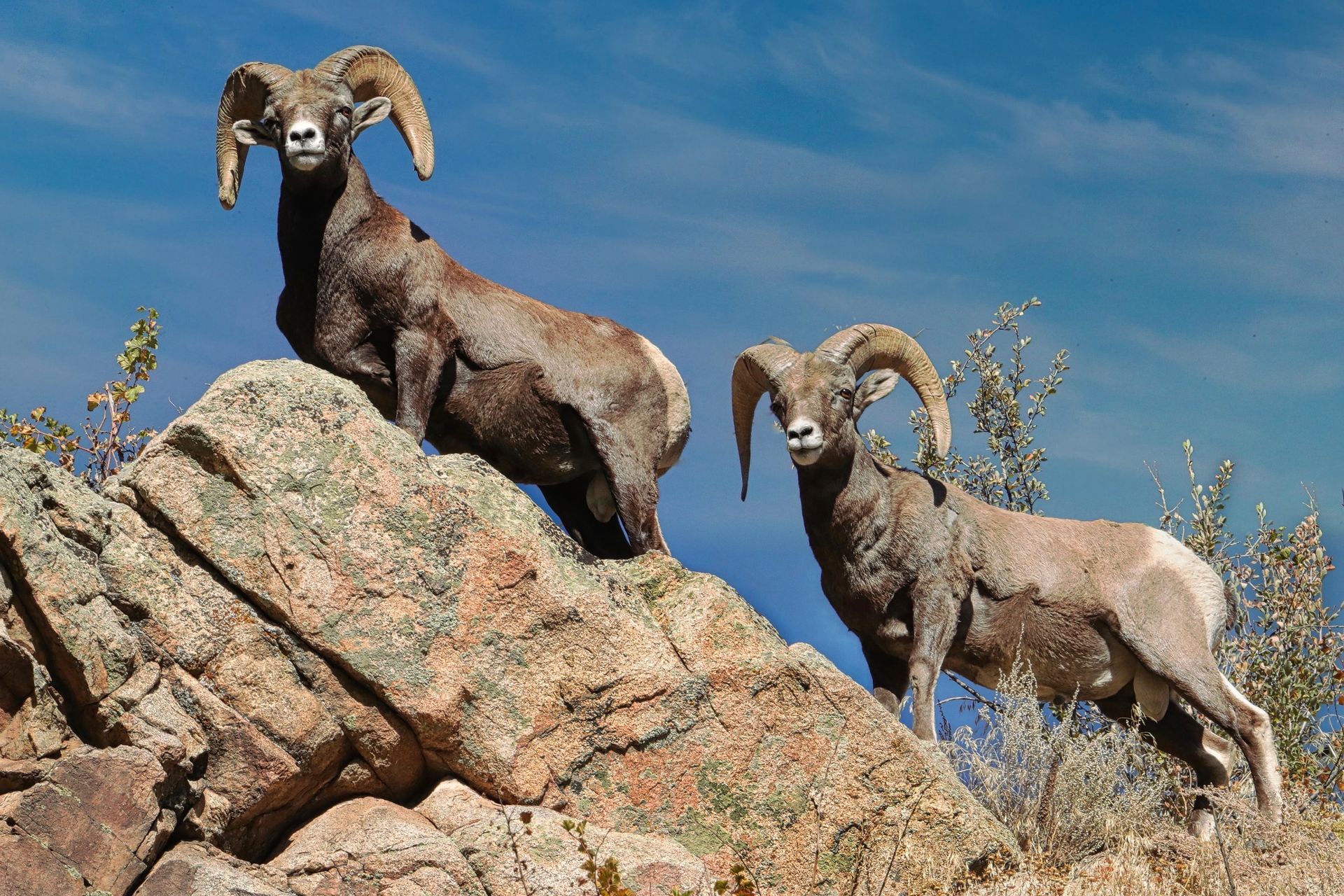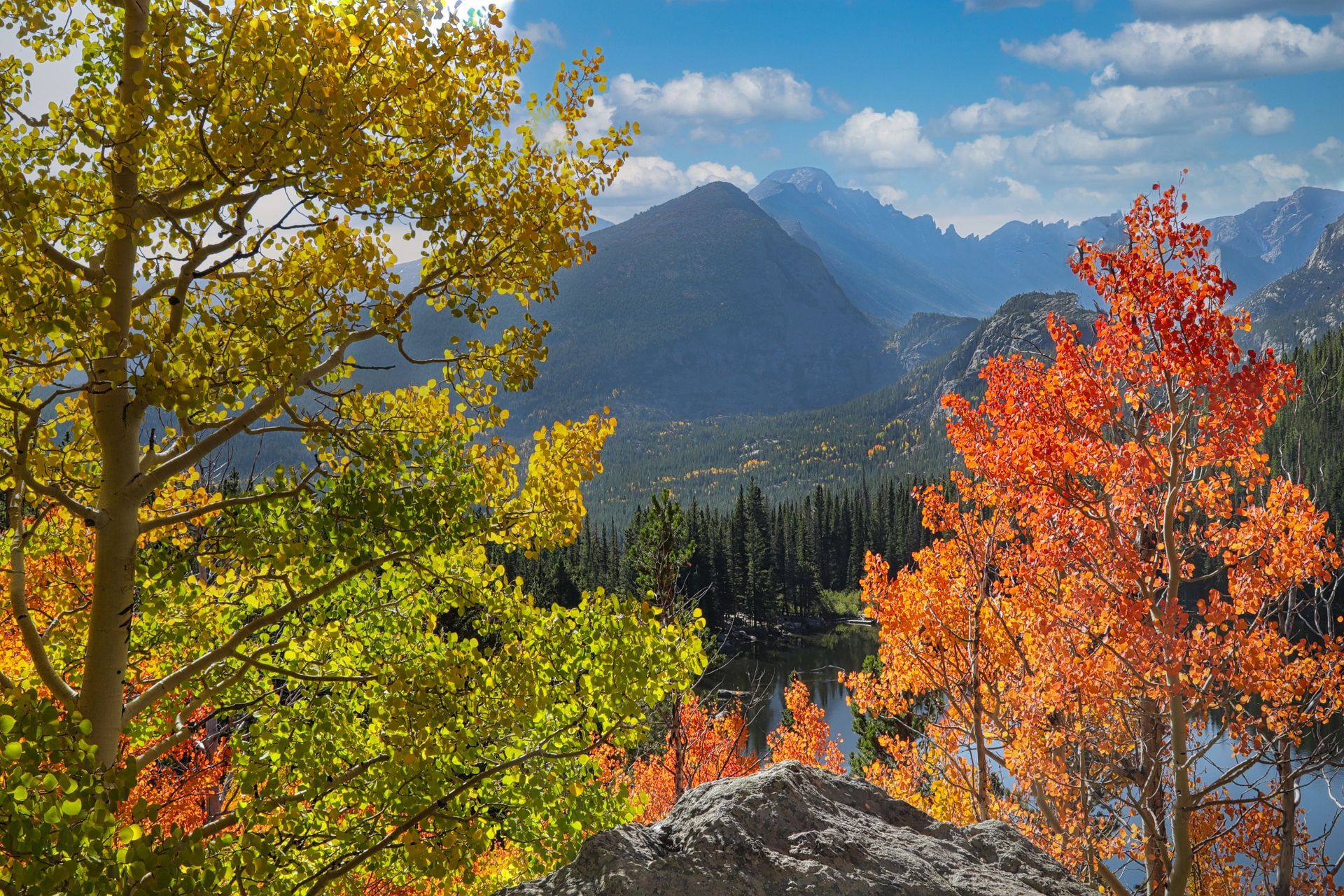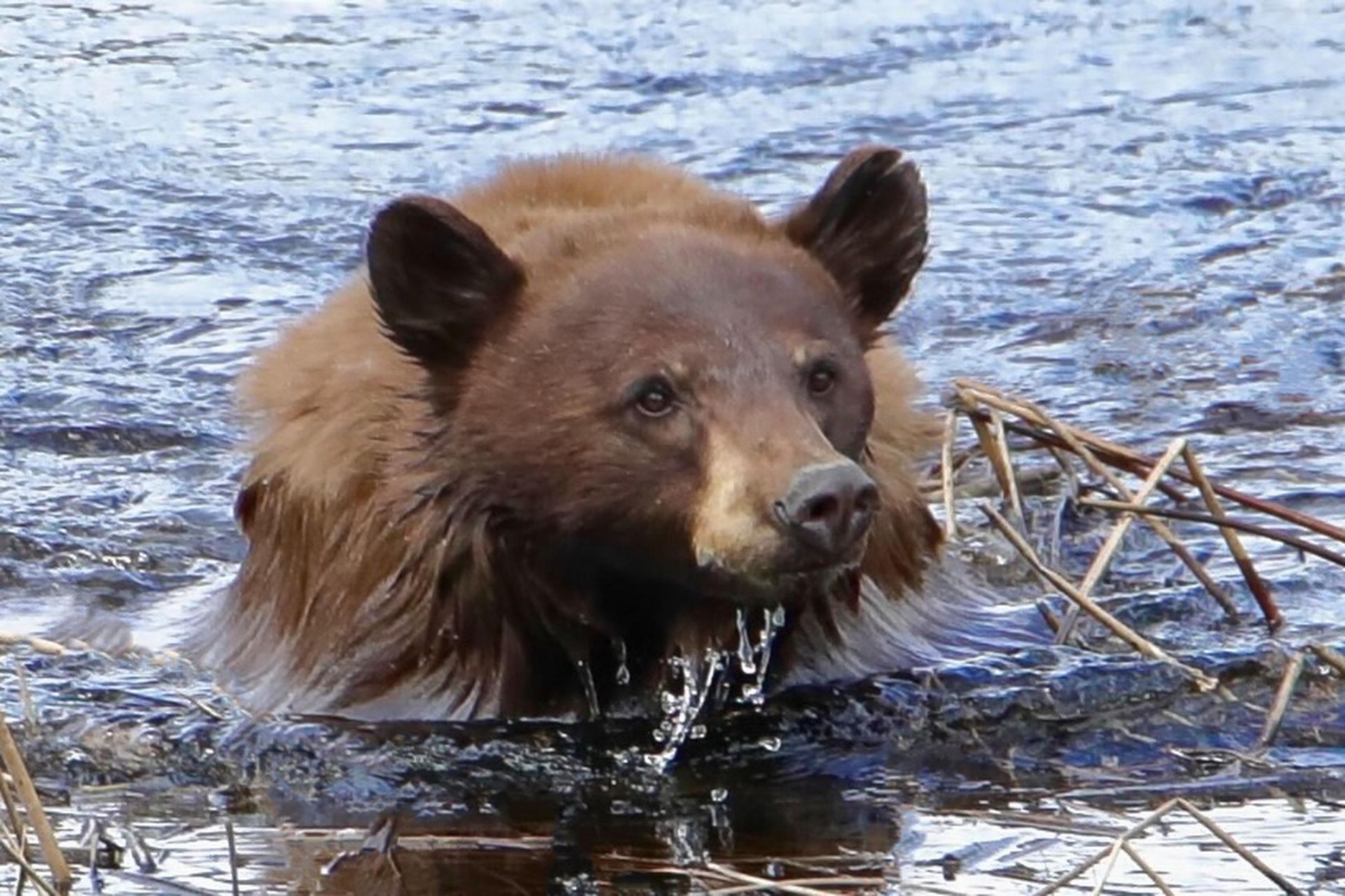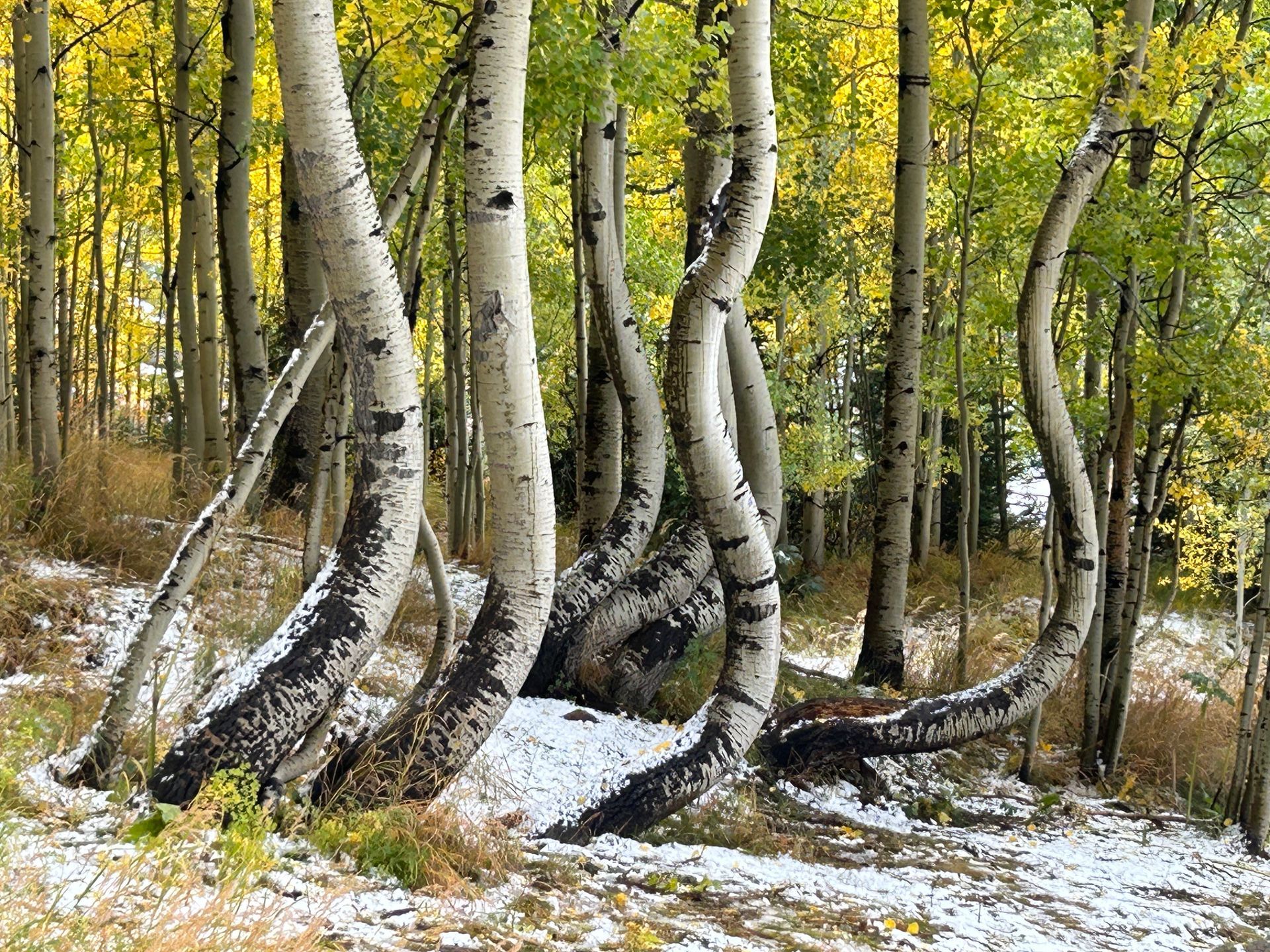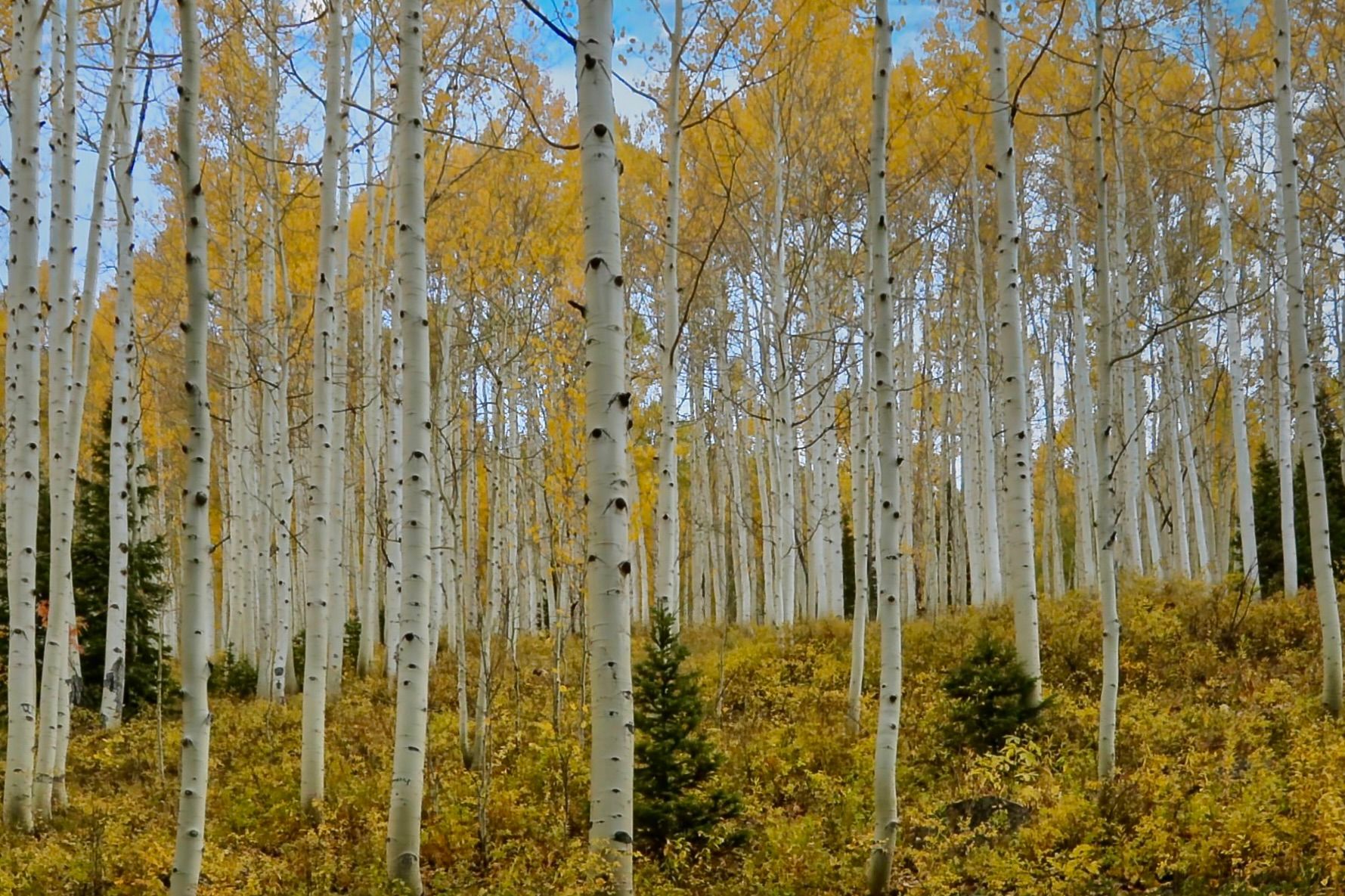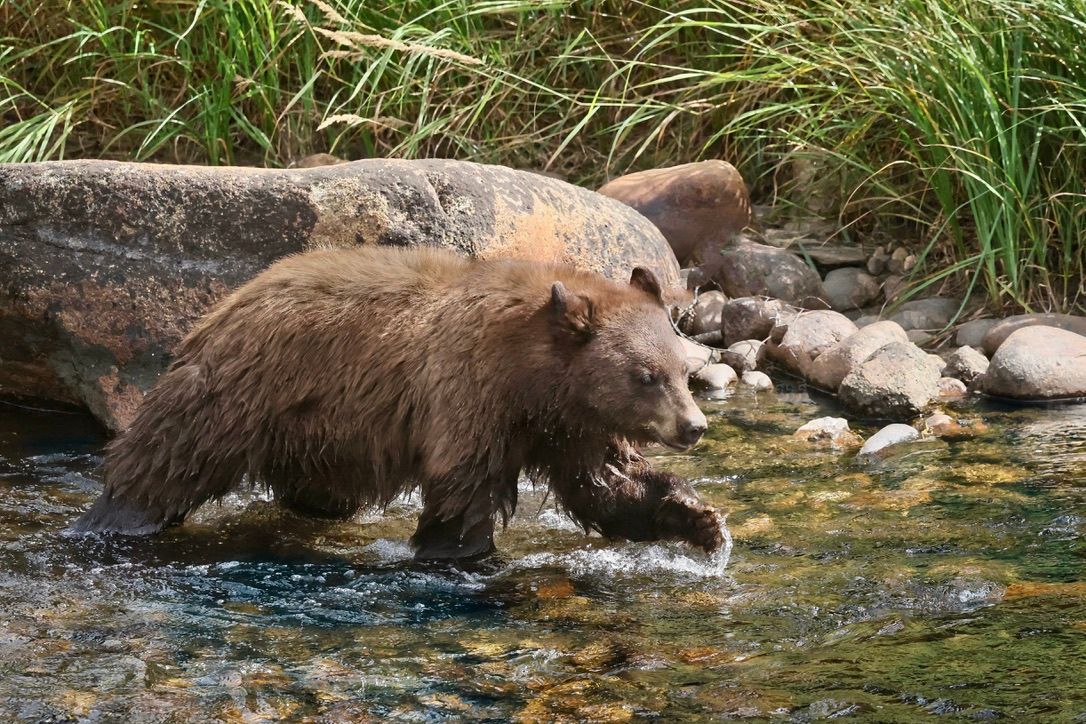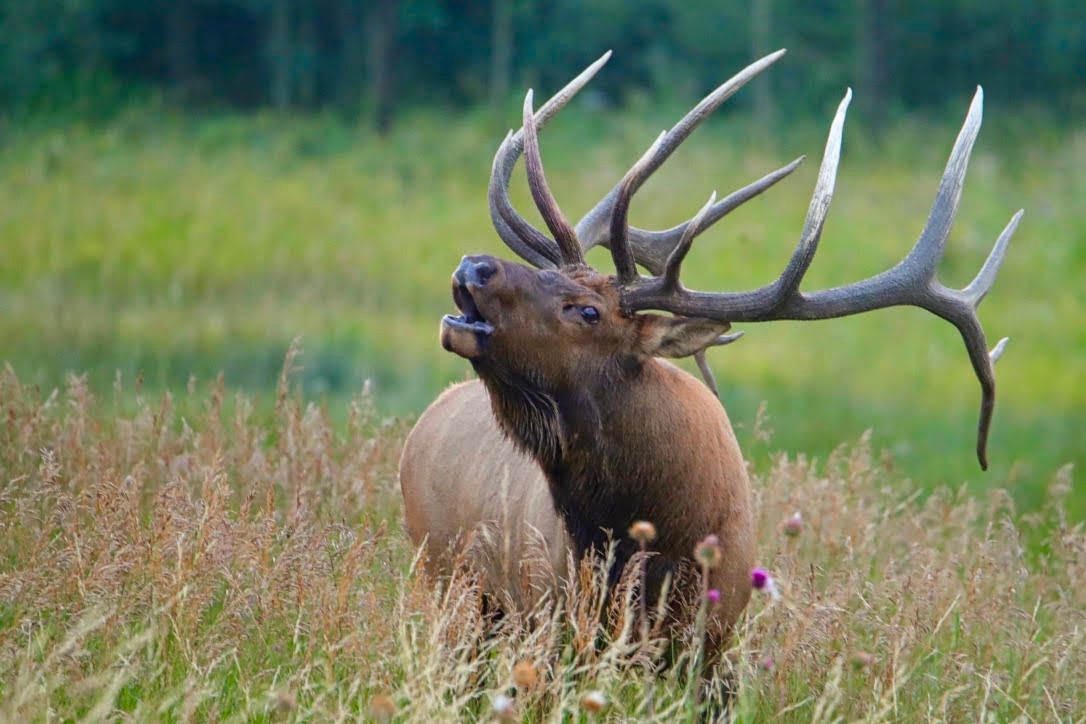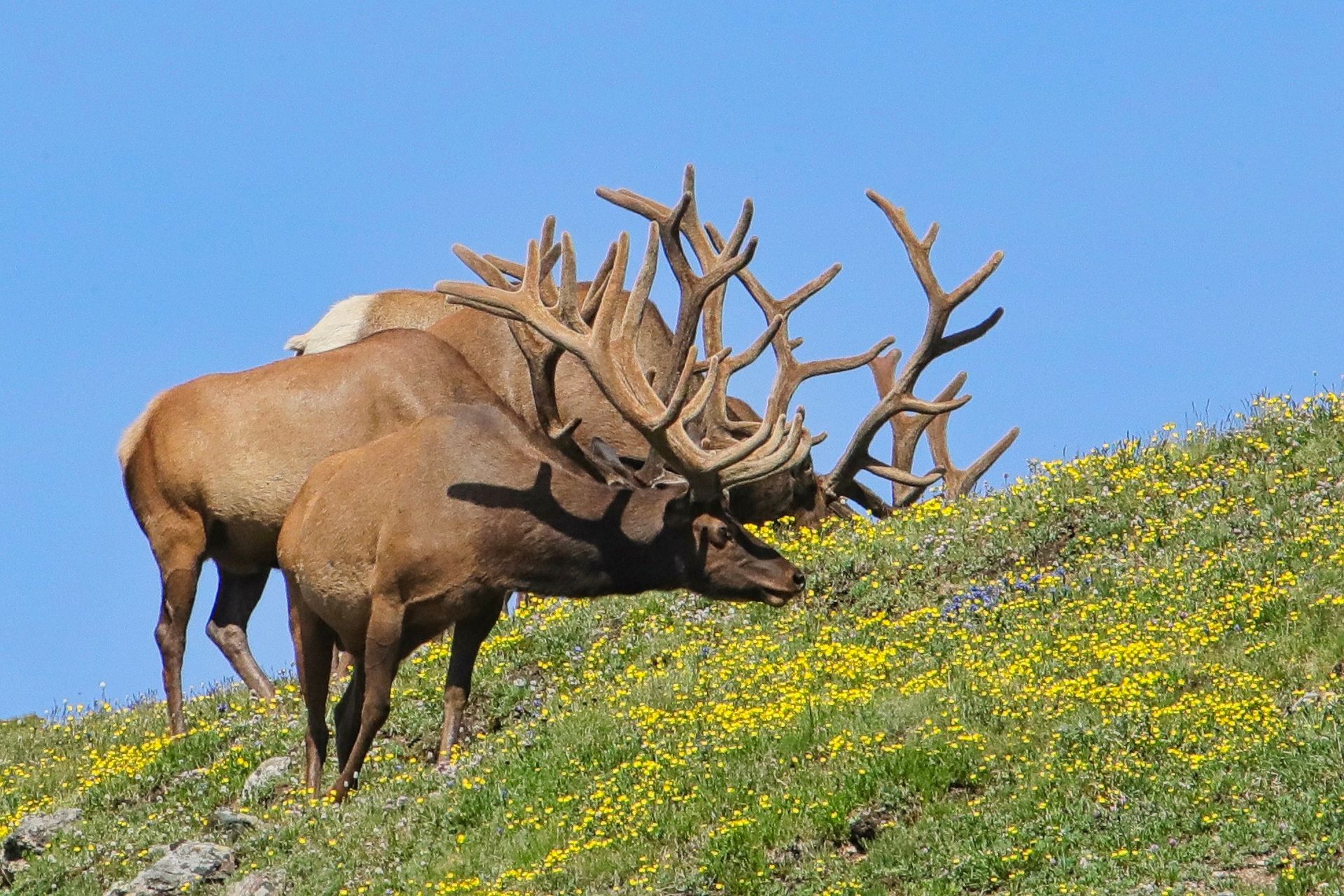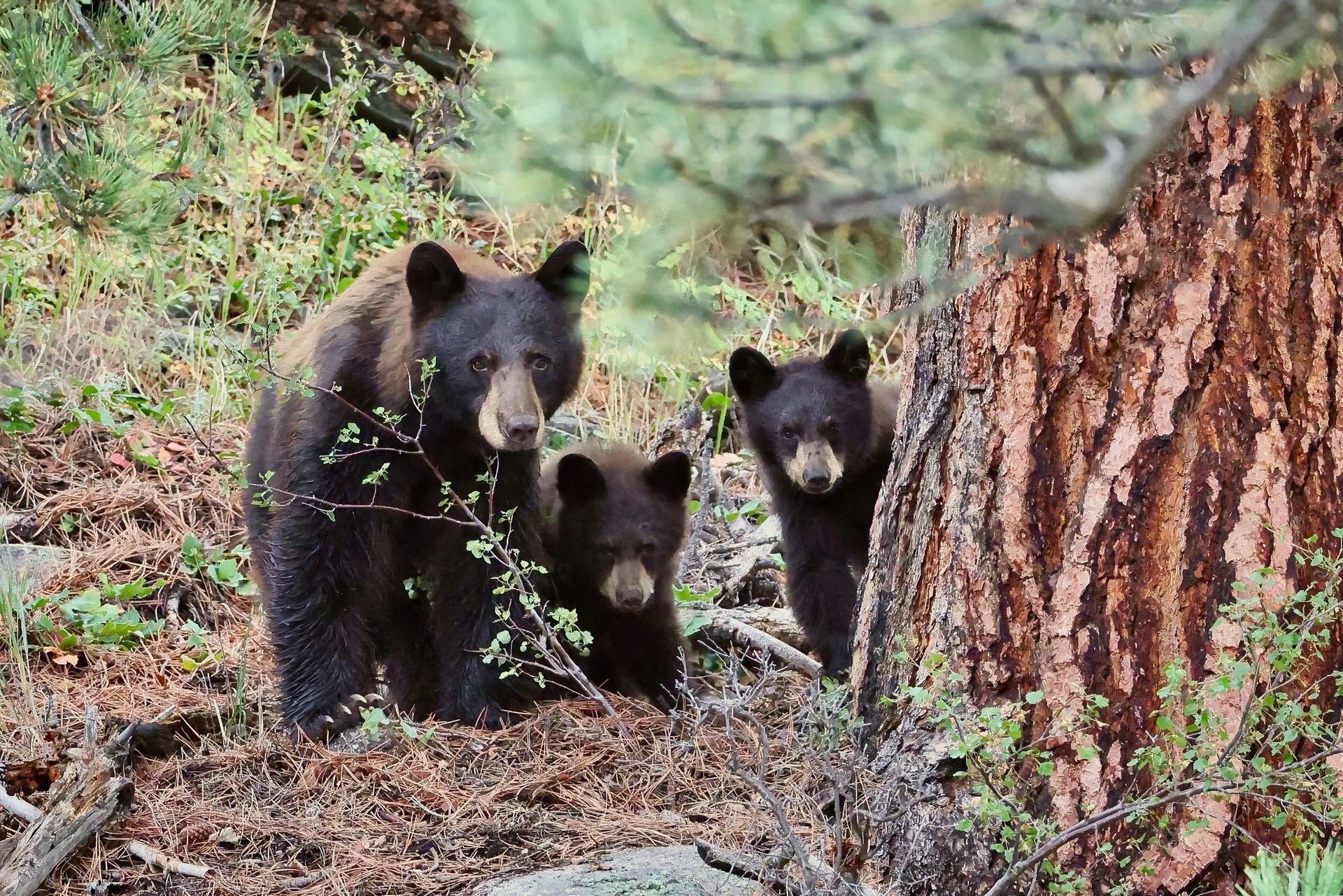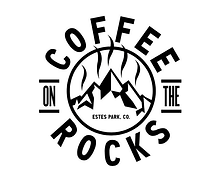A Parade of Elk
A Merry Band of Marching Bull Elk
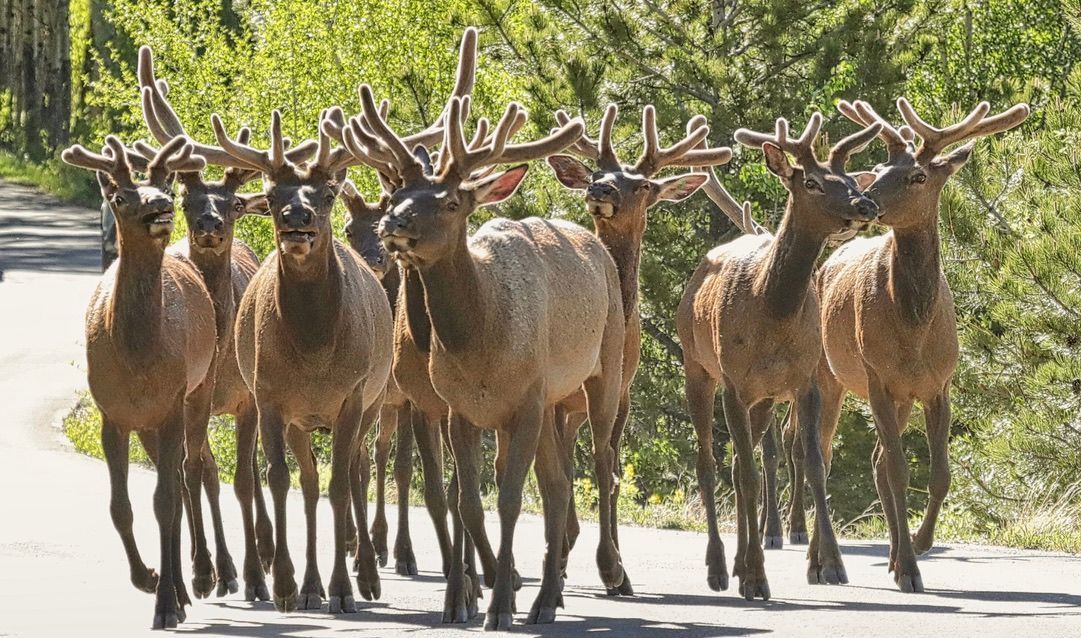
In 1909, when John Phillip Sousa played at the Stanley Concert Hall to celebrate the opening of the geo-Georgian style Stanley Hotel, it must have evoked images of a grand parade led by the marching band.
Can you see the brass band instruments, their shining bells sparkling in the sunlight of a beautiful mountain day? Those were the thoughts that flashed through my mind when I recently saw a merry band of marching bull elk. They moved in a tight formation around the curve of Horseshoe Park, the morning sun backlighting the velvet of their glowing antlers.
Seeing them march in a tight formation, I pulled quickly to the side of the road. Rushing with my camera, I was a respectable and safe distance in front of them. Like sparklers on the Fourth of July, the velvet of their antlers glowed while their bodies were a faded shadow in the bright glare of the sun.
I’d taken an image like this once before. At sunrise, a bull moose at Brainard Lake was eating the leaves of willows just as the sun peaked the eastern horizon making his velvet antlers glow. Now, it was the unique image of elk, their antlers edged in sun yellow.
Bull elk are an interesting breed.
Two months a year, they battle for dominance, but the other ten months they’re a good ole boys’ club. They wander the woods together, move en masse into the parks (from the French “parc”), graze like fraternity boys at a buffet, sleep away lazy afternoons in grassy meadows, and return to the willows and aspen for an evening meal.
All the while, their boney antlers from the fall rut have fallen away like new growth of adult teeth pushing the baby teeth out. As the new antlers grow they are surrounded by velvet that feeds the growth with nourishing blood, gaining nearly an inch a day.
That is what I witnessed on the June morning of the elk parade. Depending on their age, the elk antlers ranged from 3x3 stubs to five or six point tines on each side. Surrounded by velvet, they were thick and full, impressive even as they were growing and adding tines.
As I shot images, the elk marched on bold and proud like high stepping trombone players. They moved in line then stepped onto the blacktop passing the Lawn Lake Trailhead where tourists lined the road watching.
From there they continued toward the Alluvial Fan, over the hill created by the 1982 flood debris, passed the picnic grounds, and moved down Endo Valley.
Then they came together to fill the road from edge to edge. High-stepping across the entire blacktop, their hooves made a rhythmic clicking sound on the pavement. Like a real parade, the ranger followed the marching elk in his official law enforcement vehicle as his blue and red lights swirled.
Eventually, reaching the end of the parade route near the gate at Old Fall River Road, the elk dispersed into the foliage. Rewarded with fresh greens, they enjoyed a post-parade snack. As they did, a line of vehicles passed by admiring the marching elk who had given them the celebration of a parade.
Arriving home, I downloaded my many parade photos onto my computer. Then I began the post production process. As I did, I saw many nice images, but the initial images were special. In those images, the elk were shining. Bunched together, the sunlight made their velvet glow.
It had been exciting, rewarding, and beautiful as any parade should be, and the marching elk were a celebration of the season. I have no doubt John Phillip Sousa would have enjoyed the show.
